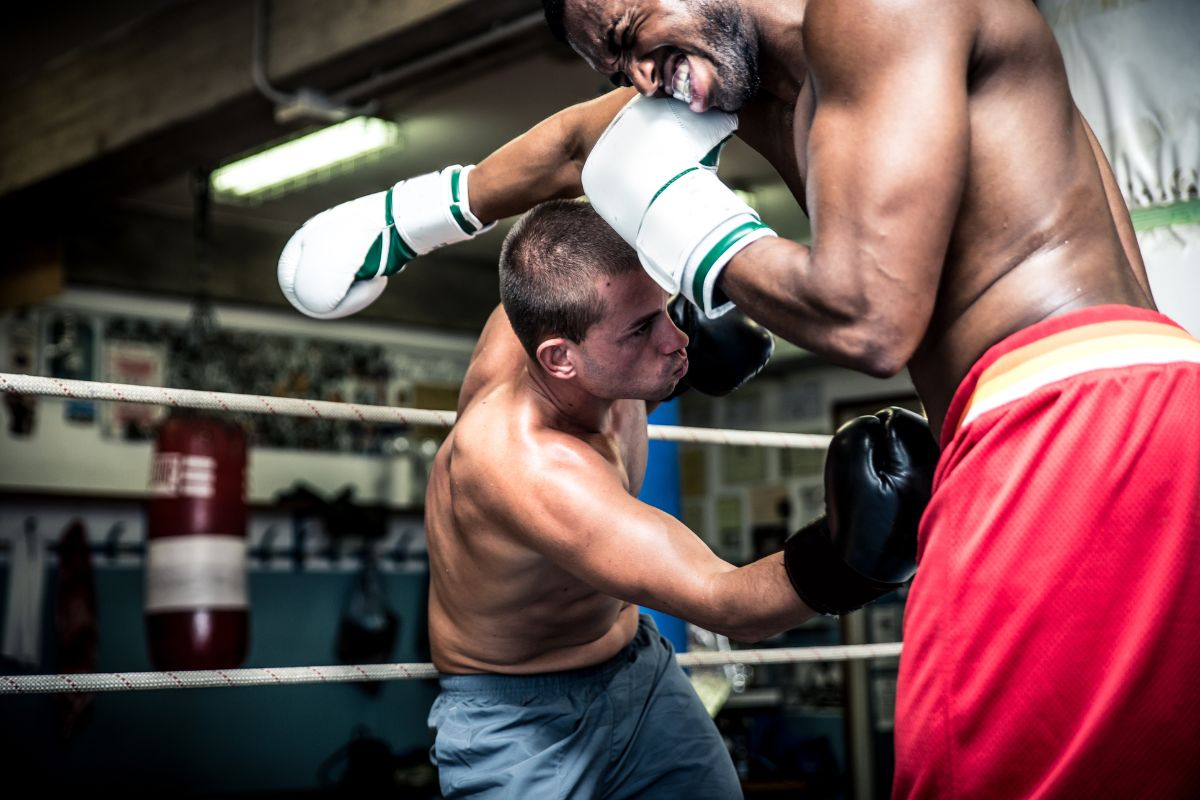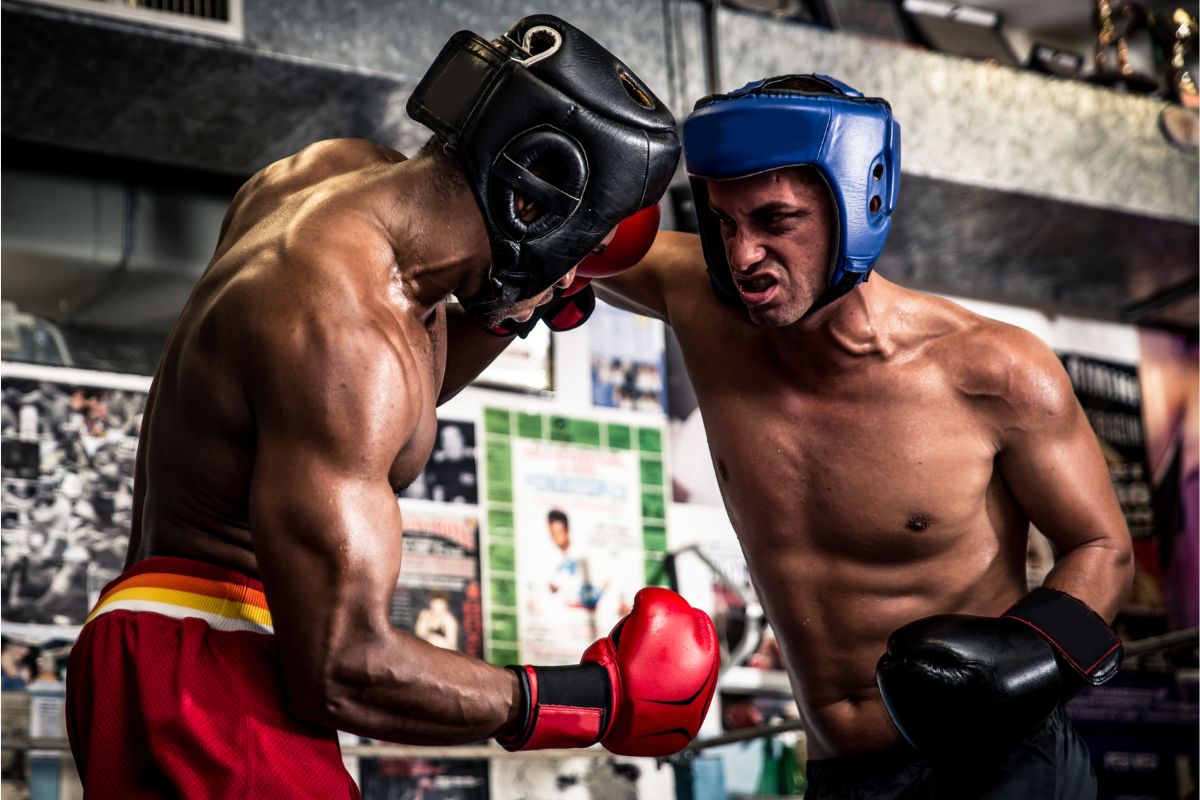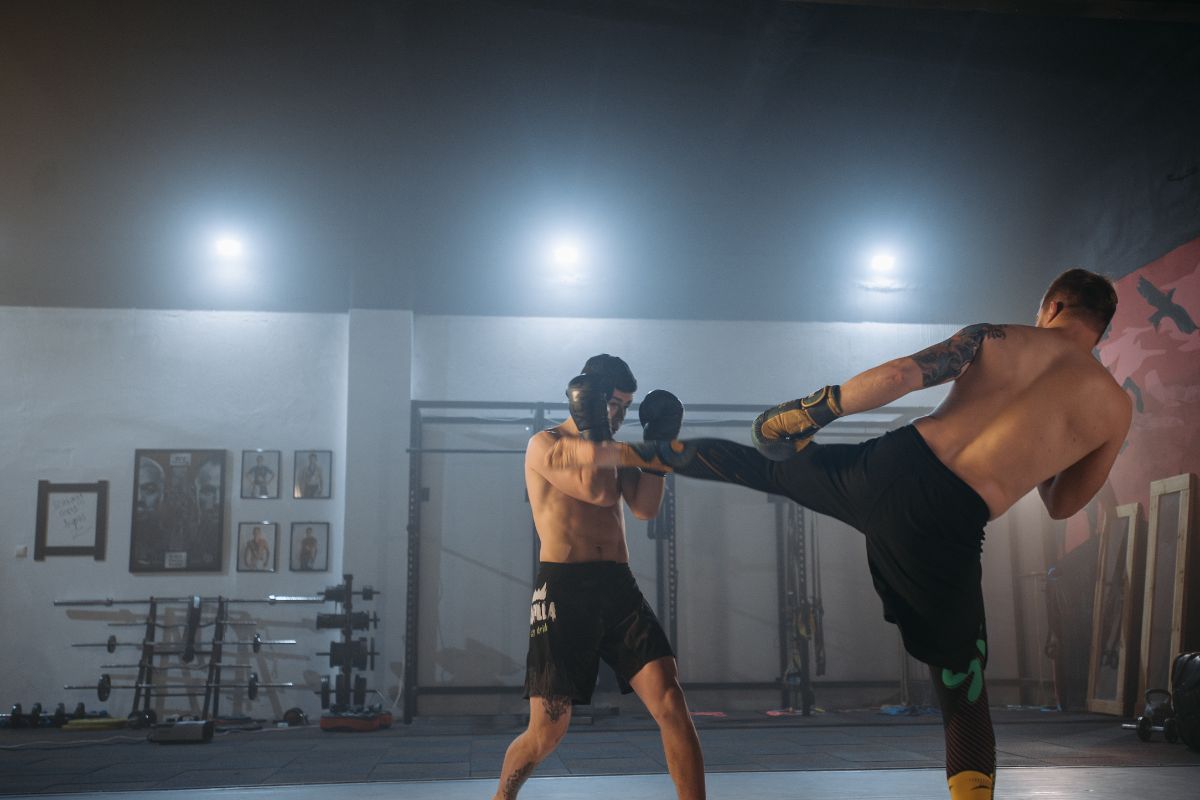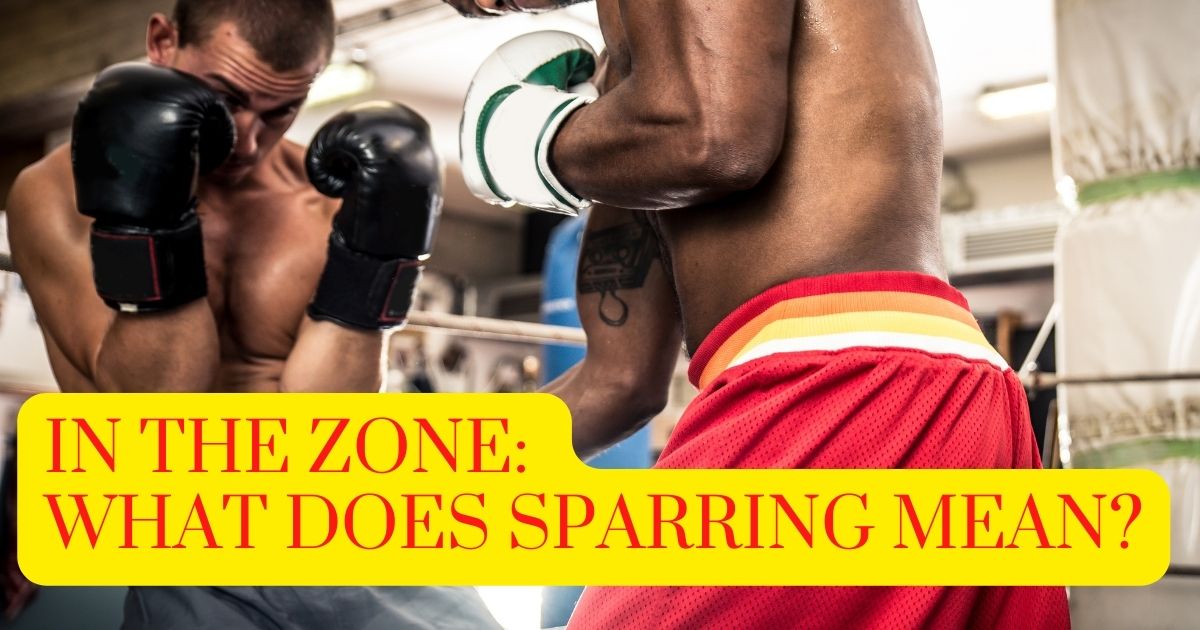What Does Sparring Mean?
What does sparring mean? Sparring refers to a kind of training common in combat sports. Many combat sports use sparring as a training method. Fighting is free-form, provided there are good conventions and rules to reduce harm. Many refer to argumentative dialogue as sparring.
Boxers generally use protective equipment like larger gloves to increase their safety during these practice matches. The training will continue as planned without either person seeking to hurt the other.

The Purpose of Sparring
Students can lack understanding of the goals of sparring practice. We frequently witness egos getting in the way of people truly attempting to accomplish a goal and gain something from the session.
Sparring helps to improve both you and your partner. At the same time, as you seek to enhance your skills and reaction times, you should endeavor to cooperate and flow with one another. Bear in mind that sparring is not combating. There is a significant distinction between the two. You’re not attempting to subdue your partner during sparring sessions.
You shouldn’t use the gym as a testing ground. You use the ring for that purpose. In the heat of the moment, it might be challenging to remember this. It’s normal to quicken your speed, hit harder, and try to recover whatever points you feel someone has scored on you.
There are times and places for challenging sparring, but it shouldn’t be the norm. That does not preclude you from working hard. You need to exercise restraint. Hard sparring and constant physical abuse of one another will only cause injuries and keep you away from the gym.
Fighting athletes can sharpen their abilities and response time through sparring. It offers a more authentic application experience for the skills that are frequently first practiced on dummies or bags. Additionally, sparring partners can benefit from one another’s experience and improve as fighters together.
The Three Types of Sparring
There are three types of sparring:
Technical Sparring
You can do technical sparring (also known as Tec Sparring) outside of a ring. The boxers do not need to wear a head guard or low blow shield because it is a non-contact sport. To be safe, the fighters must wear 16-ounce (453.6-gram) sparring gloves and a mouthguard.
Tec Sparring is a regulated activity. The boxers cannot move their feet freely, preventing them from dancing in any direction. Tec Sparring is a skill-building and reaction conditioning exercise. It is not about increasing endurance.
Conditioned Sparring
Conditioned sparring, as the name implies, refers to sparring under constraints. The boxers must be in the ring for conditioned sparring. It calls for 16 ounces (453.6 grams), gloves, a mouthguard, and head protection.
To promote the development of particular skills and tactical awareness, the settings I use in this sort of sparring adapt to a specific scenario. Conditions can sometimes be so subtle that they appear to be no more than two boxers sparring to an untrained observer.
Open Sparring
Many people are always watching open sparring in the boxing gym. Both boxers are free to employ all of their available abilities. There are safety precautions in place, such as head guards and sparring gloves, and it is my job as the coach to keep the spar under control.
Boxers are, by nature, aggressive competitors.
They cannot afford to lose their competitive edge in a sparring match because it is essential to their success. Because of this, open sparring may get fairly fierce, and intensity is necessary.
But it mustn’t become a competition when we spar for me.
A boxer uses “venom” in their fists when competing. To overwhelm the opponent, they aim to deliver “hard blows.” If you will, shock and awe, They don’t generally despise the person they’re competing against. They only care about winning, and it’s best if it’s through knockout or submission.
Is Boxing and Sparring the Same Thing?
The first step in putting everything together to fight is sparring. Practicing skill and technique is what sparring is all about. Because of the head guard and the large gloves, there is no fighting. Both provide some defense; you don’t experience skin discomfort (leather) on the skin (yours)—bone to bone, etc.
Many individuals believe that larger gloves will exert more force. The more gloves present, the more cushion between the fist and the object you strike.
Fighting is more of a simmer than a boil. The pressure of tens, hundreds, or thousands of eyes on you is not present when you are in a boxing ring inside a dank, gloomy boxing gym. The heat from the lights is absent. You can hear no screams. However, sparring is not fighting.

When You are Losing the Sparring Session
If you are losing the sparring session, be willing to acknowledge that you require a slower pace and lighter shots. Don’t be too proud to say this. You should slow down if you’re worried about your opponent striking you. You are not a baby, needing more time to adjust to new situations.
In the battle to learn, you have to give yourself a fair chance. If someone more skilled (or natural) at fighting than you beats you, demonstrate your ability to accept punishment.
Inform your opponent that he is moving too quickly. He’s fighting you; he may know you better than your trainer. Ask him for advice on what to do!
Be modest and avoid acting superior to others, even if true. Let people know you respect their knowledge and appreciate it by working respectfully. Boxers who are just starting do not miraculously improve overnight without ever needing to pick up tips from more seasoned competitors.
Slow down so you can observe every tiny nuance of your opponent’s posture, gait, and technique with your eyes. You’ll also be able to focus on your strategies and be more aware of any potential weaknesses they may have introduced.
When You are Winning the Sparring Session
Do not act irrationally if you are winning the sparring session. Allow your sparring partner to engage in combat. In two ways, this enhances your skills. One is that you’re giving him a chance to learn, so he’ll get better, which will make you better because you’re now practicing with a more skilled foe.
The second is that you want a confident opponent to spar with. Allow him to respond and allow him to put you to the test. You want to spar with someone stronger, right? The opportunity, then. Avoid intimidating him or scaring the living daylights out of him in an attempt to silence him.
Allow him to engage in combat, so you have a real opponent to test your talents. It is unnecessary to brag in front of a novice because doing so impresses other beginners. Keep your cunning strategies and KO strength for tournaments. The men you wish to knockout and remove from the sparring fight are your competitors.
These are the guys you should beat up without giving them a chance to retaliate. Respect your gym’s partners in combat. They will also respect you and be ready to assist you. Since they know you won’t use them to beat them up, they could even offer you some advice.
What is Controlled Sparring?
We all understand that winning fights is the main objective of boxing, something that normally requires experience. In the same way, that footballers utilize scrimmages to improve their games, you also need a safe approach to refine yours.
In boxing, this refers to sparring, which you can do with low or strong intensity but always under control. The goal is not to get beat up or beat up your opponent but to work on technique and refine your skill.
Bypassing the “school of hard knocks” in favor of something you can do safely in a controlled atmosphere works much better and will keep you around longer. Actual combat does teach you the game of boxing. Additionally, it might make your workout more entertaining. This can apply to the Karate spar.
Why Controlled Sparring?
Consider this: Would you prefer to learn by participating in actual combat missions if you were a fighter pilot in training? Most likely not, and for a very good reason—to preserve your life as you hone your craft.
Fighting is a sport where you love it or hate it. You can hurt yourself if you don’t know what you’re doing. Receiving a punch is like getting whacked in a way intended to put you to sleep—fighting results in a victor and a loser.
On the other hand, sparring should never result in a victor, a knockout, or even a well-placed punch—assuming you do it correctly, which it frequently isn’t. It should resemble fighting but without actual punches. Instead, you should “tag” each other with your gloves to ensure that it is minimal or even no touch.
As long as neither person intentionally causes harm, you can do this at various intensities. This also means that you shouldn’t use your opponent’s mistakes in a severe sparring martial arts session to your advantage, as you would in a real fight.
For instance, slow down and give your opponent some time to rest if they are becoming fatigued and dropping their hands. Going for the kill is acceptable when it matters, which it never does in sparring.
A trainer should typically be there to supervise the action and prevent it from getting out of control. Yes, during sparring sessions, the competitive juices can flow. But what you should concentrate on instead of trying to win an impossible fight is learning and figuring out what works or doesn’t.
It’s time for the real war once you figure it out, but let’s first take a closer look at how controlled martial arts sparring can help you get there. But this goes beyond simply making irrational punches and movements. Instead, both combatants must simulate counterpunches and blocks to simulate actual contact.
This will help you as a beginner become accustomed to anticipating and countering in the ring. It should also involve delivering punches when openings are available while blocking, dodging, and evading blows in response to your opponent’s motions.
Instead of working on combos like you would with a heavy bag, do this in a spontaneous, free-form manner that simulates fighting. You can use hand wraps or gloves to get used to their weight and feel; nevertheless, you shouldn’t put them to use just yet.

That’s a Wrap!
Although you can do the sparring sport at a level of intensity close to a fight, you should never do it with unmatched opponents or at a level of intensity that transcends specific boundaries. Instead, aim for easy sessions with a foe comparable to you in terms of experience, weight, and skill.
They should be willing to work with you ethically while being a more skilled fighter (a great way to improve your game, by the way). Bullying has no fans, and it has no place in the boxing gym, especially during sparring boxing sessions.
Skill improvement, form practice, focus on balance and technique, and most importantly, fun belongs in sparring sessions. You may put these skills to use in actual fights like in spar Karate by developing them in a safe and controlled sparring environment.
By doing this, you can be more at ease and have a better chance of winning than if you tried to learn while under fire. After all, basic training is essential for soldiers for a purpose, just as it is for you!

